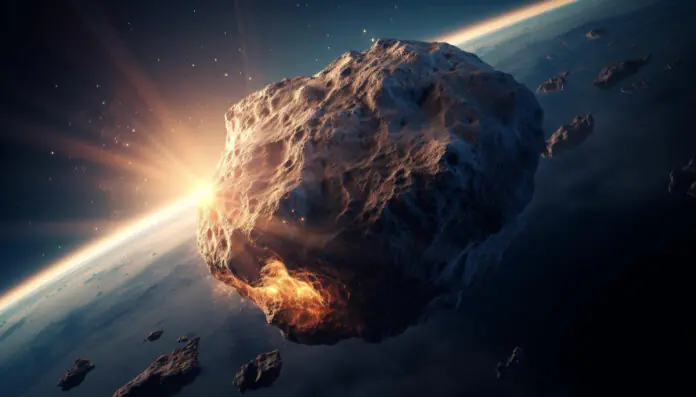Scientists utilize sofia to uncover water molecules on asteroids Iris and Massalia
In a groundbreaking discovery, scientists have detected water on the surfaces of two asteroids for the first time, challenging previous beliefs that these asteroids were dry.
Using the Stratospheric Observatory for Infrared Astronomy (SOFIA), researchers from the South West Research Institute (SwRI) identified the presence of water molecules on the asteroids Iris and Massalia, which were previously thought to be dry silicate asteroids.
Asteroids are remnants of the early solar system and understanding their composition can provide insights into the formation of planets, including Earth. The discovery of water on these asteroids is particularly significant as it could help scientists understand how water was delivered to Earth.
Embed from Getty ImagesDr Anicia Arredondo, the lead author of the Planetary Science Journal paper detailing the discovery, explained that they based their research on the success of previous findings of water on the sunlit surface of the Moon using SOFIA. The team was able to detect a spectral signature attributed to molecular water on the two asteroids.
Previous studies had detected hydrogen on the moon and asteroids, but distinguishing between water and hydroxyl was challenging. However, the discovery of the asteroids suggests that there is roughly the equivalent of a 12-ounce bottle of water trapped in a cubic meter of lunar surface soil.
This finding aligns with observations of water abundance on the sunlit surface of the Moon, also observed using SOFIA. Water on asteroids can be bound to minerals, adsorbed to silicate, or trapped or dissolved in silicate impact glass.
The discovery opens up new possibilities for understanding the distribution of water in our solar system and beyond. It also highlights the potential for finding life elsewhere in the solar system.
Future research will involve using NASA’s James Webb Space Telescope to analyze more asteroids, with initial measurements already conducted on two asteroids and plans to examine another 30 targets.
